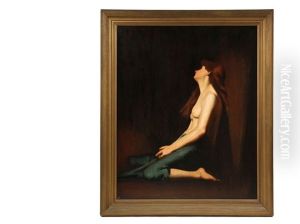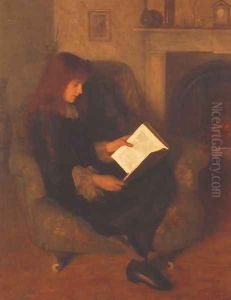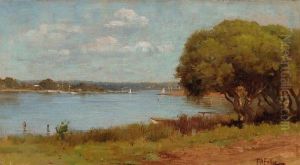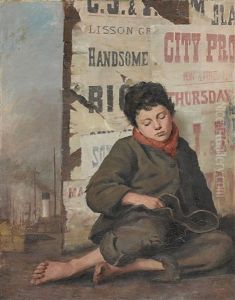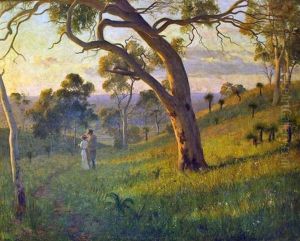Florence Fuller Paintings
Florence Fuller was an artist born in Port Elizabeth, South Africa, on July 17, 1867. She was known for her work as a painter, particularly her portraits, landscapes, and depictions of Aboriginal Australians. Her family moved to Melbourne, Australia, when she was quite young, and it was there that she began her formal art education. Fuller studied at the National Gallery of Victoria Art School under Frederick McCubbin and George Folingsby, which was a significant opportunity for a woman artist at the time.
In the early 1890s, Fuller moved to the more artistically progressive city of Paris to continue her studies. This period was crucial for her development as an artist, as she was exposed to a range of new ideas and artistic styles, including Impressionism. Upon returning to Australia, she established herself as a professional artist, participating in important exhibitions, and receiving recognition for her work.
Fuller was also known for her social consciousness and used her art to comment on the social issues of her time. She was particularly moved by the plight of indigenous Australians and was one of the few artists of her generation to portray them with empathy and dignity. Her painting 'Inseparables' (1894), which depicts an Aboriginal mother and child, is one of her most celebrated works and is regarded as an early statement of humanity and equality in Australian art.
Despite her success, Fuller faced the challenges that were typical for female artists of her era, including limited opportunities compared to her male counterparts. Nonetheless, she maintained a successful career and traveled extensively, including to India, where she was appointed as an official artist for the Durbar, which marked the coronation of King George V.
Fuller continued to paint and exhibit her work throughout her life. In her later years, her eyesight began to fail, which greatly affected her ability to create art. She retreated from the public eye and lived quietly until her death on July 17, 1946, in a suburb of Melbourne. Today, Florence Fuller is remembered as a significant figure in Australian art history, and her works are held in several Australian public collections, including the National Gallery of Australia, the Art Gallery of Western Australia, and the National Gallery of Victoria.
